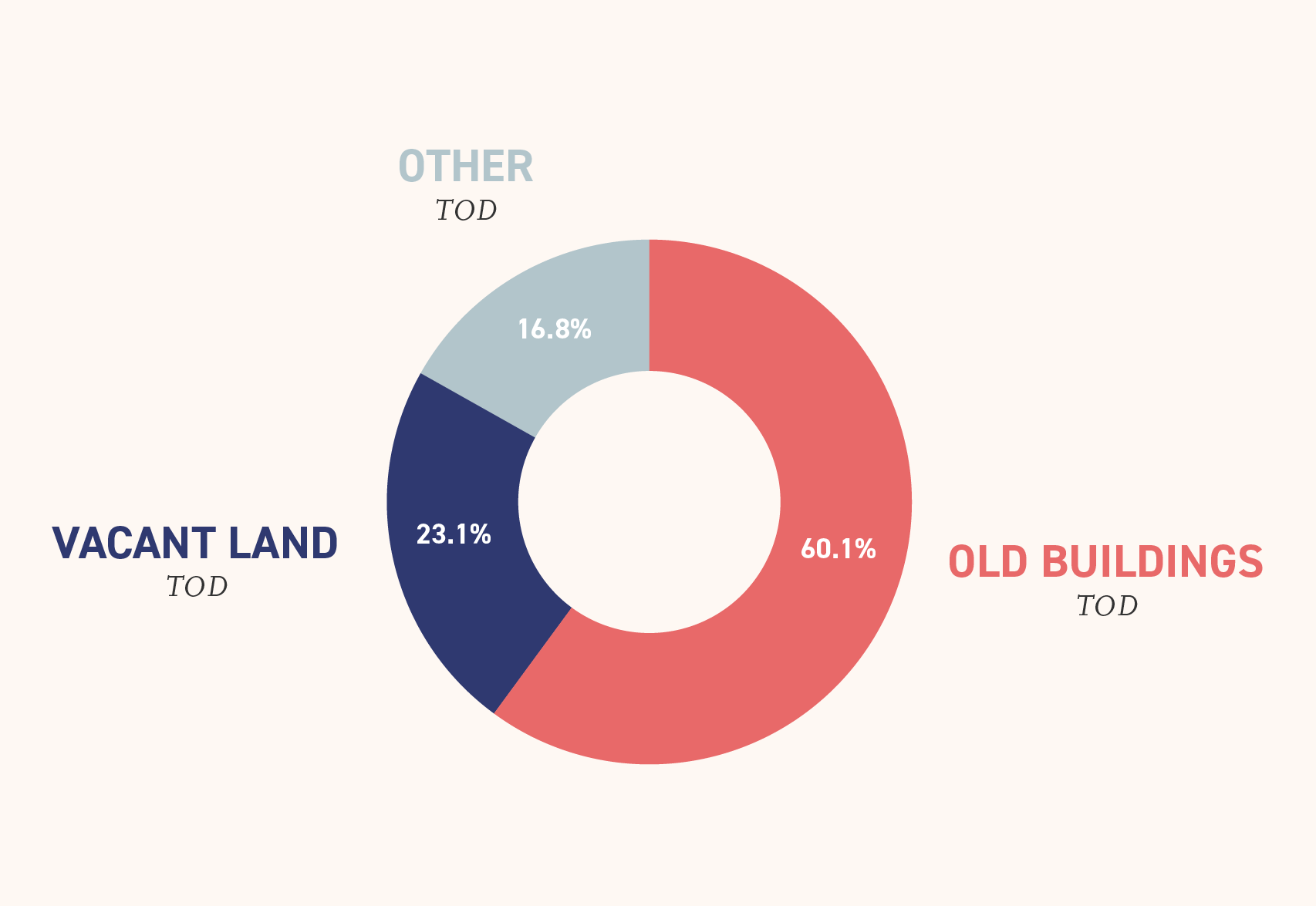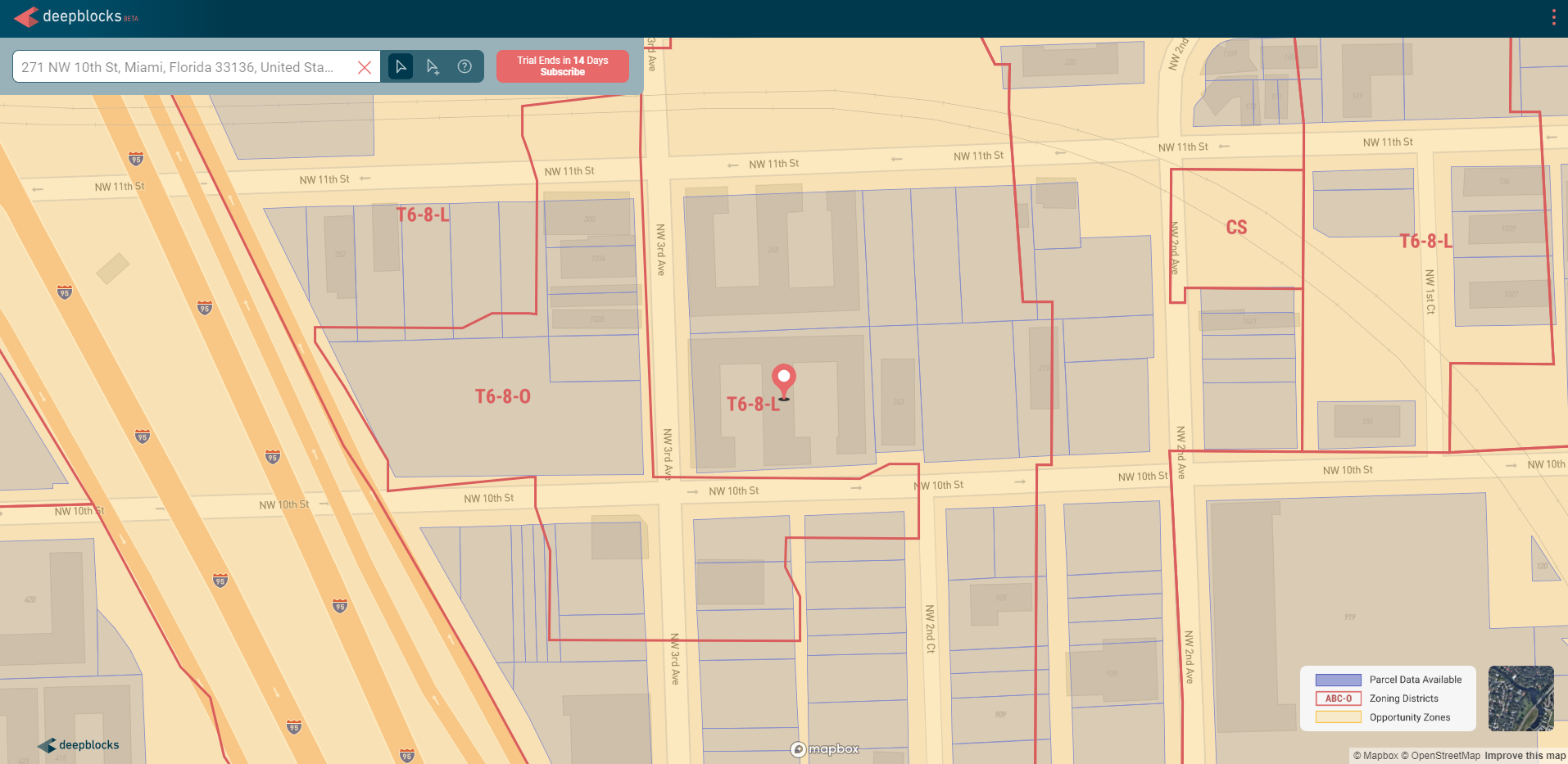Over the past five weeks, we have studied Vacant Land, Old Buildings, Build More Units, T4 and T5’s parcels within Opportunity Zones. This week, I’ve uncovered all the parcels within a Transit Oriented Development (TOD)[1]. These parcels qualify for a reduction in parking requirements, as stated in the Miami21 zoning code. As with the earlier studies, this offers multiple value-add components to potential developments across the city.
For this exercise, we will look into the impact on total project cost that the TODs have by reducing the total parking required by 30%, 50% or 100%. The chart below displays all the parcels that are within TODs, broken down by land type:
TODs by Land Type
In total, there are 4,651 parcels that fall within the TOD’s and Opportunity Zones. Of these, 1,073 are vacant land, and 2,793 have old buildings on them (pre-1970). Let’s unpack the details further and look into what is feasible when we combine a TOD and a unit-increase area (RDIA)[2] to extract the most scarce, valuable land parcels:
181 Vacant Land, 300 units/acre.
141 Vacant Land, 500 units/acre.
79 Old Building parcels, 300 units/acre.
66 Old Building parcels, 500 units/acre.
3,401 are neither Vacant Land or Old Building, nor 300 or 500 units/acre unit density.
The low quantities above highlight the scarcity of these parcel types. We could speculate this also increases their value, especially for large development plays within Opportunity Zones. Parking, in general, is a major cost burden that reduces return on investment for owners and developers.
Below, using Deepblocks BETA software, I’ve modeled one scenario and pulled out the return on cost percentage (ROC) and total units when applying a parking reduction percentage.
This development scenario is a T6-8-L, applying a 30%, 50% and 100% reduction, within a 300 unit/acre density area, on vacant land.
The modeled parcel via Deepblocks Software.
OPTION 1: 100% PARKING REDUCTION
Modeled using Deepblocks Software [3]
Zoning Type:
T6-8-L
Land Type:
Vacant
Density:
300 units/acre
Units:
165
Return on Cost:
9.25%
OPTION 2: 50% PARKING REDUCTION
Modeled using Deepblocks Software [3]
Zoning Type:
T6-8-L
Land Type:
Vacant
Density:
300 units/acre
Units:
133
Return on Cost:
8.13%
OPTION 3: 30% PARKING REDUCTION
Modeled using Deepblocks Software [3]
Zoning Type:
T6-8-L
Land Type:
Vacant
Density:
300 units/acre
Units:
119
Return on Cost:
7.65%
CONCLUSION
Find the parcels that are within TOD’s and a unit-density increase area in the Opportunity Zones. This will increase your upfront capital cost, but the financial return is increased to potentially make a project viable, where it may not have been before without these incentives provided by the city.
Happy to share the same report, in any city, with anyone interested.
Notes:
TOD is a Transit-Oriented Development as defined by the Miami21 Zoning Code.
RDIA (Residential Density Increase Area), see last week here.
All other project assumptions are kept the same. The assumptions changed are the amount of parking required and the amount of units allowed to stay under the eight floors allowed per Miami21, T6-8 regulations. There is also the relatively unknown of the specific value-add offered by the Opportunity Zones, which is not calculated here.




![Modeled using Deepblocks Software [3]](https://images.squarespace-cdn.com/content/v1/5c4a3059e2ccd16e3f4cd84a/1556209507503-RD4J7NLURNT2UV0ZVM3I/T-6-8-L+No+Parking.PNG)
![Modeled using Deepblocks Software [3]](https://images.squarespace-cdn.com/content/v1/5c4a3059e2ccd16e3f4cd84a/1556209721364-2EDEKZLVG4QMFMCX13P4/T-6-8-L+With50%25Parking.PNG)
![Modeled using Deepblocks Software [3]](https://images.squarespace-cdn.com/content/v1/5c4a3059e2ccd16e3f4cd84a/1556209919434-818AS1ZVX7OSC4BUBBDO/T-6-8-L+With30%25Parking.PNG)
